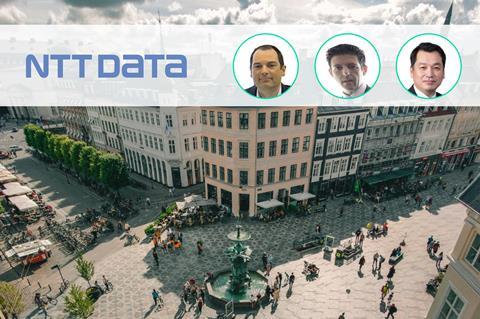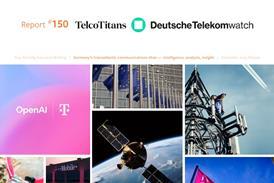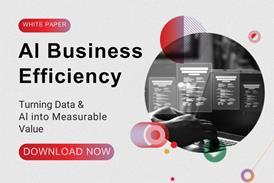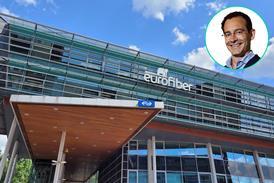- Technology partner NTT DATA is upbeat on opportunities for telecom operators to make profitable returns on their heavy investment in next‑generation infrastructure — but only if they step up to the challenge of managing the complexity of open networks.
- The vendor-neutral integrator notes its ‘telco DNA’ and muscle that come with the multiplier of parent and global innovation force NTT Group.
- NTT DATA sees itself well‑positioned to support essential systems simplification, with a layered approach to managing critical data that makes technologies such as dynamic network slicing manageable, cost‑efficient, and monetisable, including in multi‑vendor settings.
- The value of collaborative initiatives such as the TM Forum’s Catalyst programme are highlighted by NTT DATA as a powerful way to deliver tangible solutions, and not slideware, proving the potential of new network platforms.
- Generative AI is emerging as the final piece of the puzzle, and NTT DATA cites its history of AI support, and a recent sevenfold increase in GenAI investment as positioning the business at the cutting edge of telco‑tailored models.

For global telecom operators, the current cycle of intense capital investment in building next‑generation networks may be drawing to a conclusion.
This extended period of foundational activity and modernisation has seen considerable collaborative work, readying opportunities to leverage the capabilities of new networks to truly transform operators’ businesses.
With the further step‑change that GenAI is now bringing, including enabling components required for sophisticated new use cases to click, the sector is today ready to focus on making return on this investment.
This sense of tipping point was evident at TM Forum’s recent DTW24 - Ignite event in Copenhagen, with the mood summed up succinctly by Luis Rubio, NTT DATA’s Telecoms Network Executive. “Now it’s time to start monetising and to start capturing revenue streams”, he declared.
In conversation with TelcoTitans, it is clear that NTT DATA is intent on asserting its place as a leading international enabler of the new wave of service and revenue opportunities. This leverages experience at the cutting edge of telecom service development, facilitated through its role within Japan’s globalised communications, cloud, technology, digital services and infrastructure leader NTT Group.
Also significant to the technology service provider is its groundwork supporting the telecoms sector’s research into new opportunities and advancement of open technology, through prominent involvement in leading industry and initiatives such as open RAN and TM Forum’s Catalyst programme.
For NTT DATA, the challenge is arguably not to demonstrate its technological credentials, but in getting the word out on the scope and scale of what it can do, and the wider coordinating role it increasingly plays in a market where it may previously have been viewed as systems integrator rather than major force in network engineering.
Savvy operators are increasingly appreciating this confluence of NTT DATA’s strengths with sector priorities, with Rubio highlighting that reinterpretation of the business has dovetailed with the evolution of network digitalisation — citing groundbreaking partnerships with major digital infrastructure trailblazers worldwide.
With a client list that in Europe alone spans BT, Deutsche Telekom, Orange, Telecom Italia, Telefónica, and Vodafone — and globally touches every major telco, as well as challengers — NTT DATA’s status as a telco sector best kept secret may be coming to a close. “Over the past five years, we have evolved a lot”, Rubio says, flagging a roundtable hosted at DTW24 where “three very remarkable projects” were showcased across Telefónica’s intercontinental footprint.
Heritage helps, too, with Japan mobile leader and sibling NTT DOCOMO another reference point for delivering pioneering and profitable value‑add digital services that leverage connectivity, notes Partner for Telecom César Risco, together underpinned by NTT Group’s renown as an industry R&D powerhouse.
NTT DATA’s own credentials are strong in areas of innovative propositions, too. “For Network-as-a‑Service, network slicing, and other 5G use cases, we’re recognised as a system integrator and consulting group with experience in the vertical industries that are an important lever for growth”, says Risco.
With the aims and aspirations of telcos converged with those of his own business, Rubio is convinced the opportunity is here for the whole sector to secure a return on the years of investment.
Sophisticated use cases demand layered network approach…
Expanding on what he describes as NTT DATA’s “telco DNA”, Risco cites experiences such as working on open RAN, with NTT DOCOMO providing vital experience in understanding the merits and challenges faced by digital telcos.
Similarly, NTT DATA is able to draw upon work underway as part of the NTT-led Innovative Optical and Wireless Network (IOWN) initiative, which is paving the way for next-generation, terabit-class network connectivity that is paired with computational power to create a cognitive and digitised platform capable of meeting future demands for data transmission and information processing. Collaborations and use cases include 6G and financial services, with Ericsson, Google, Intel, Microsoft and Nokia amongst key partners.
This has been accompanied by development of the Open Telecom Network (OTN) project from NTT DATA, which, fittingly for the new digital ecosystem, involves a global virtual team with presence across Europe as well as Japan. The approach is built on delivering the value and benefits associated with a layered network architecture, according to Risco, which is intended to avoid vertical siloes that can enmesh traditional operator‑vendor relationships.
NTT DATA provides solutions across all three layers of network, OSS, and monetisation, backed with network consultancy, which Risco says drive further efficiencies.
“ We have a strategy of assisted consulting, and with that we have a catalogue of different connectors and can simplify elements of network management in a multi‑vendor setting, and this enables us to be the more cost‑effective option for operators. ”
Risco.
When compared to rivals, NTT DATA claims a 30% reduction in costs for managing new network operation services through its AI‑enabled layered approach. This is already applied in telcos such as Telefónica’s Brazilian operating business Vivo, which was a case study at the DTW24 roundtable. Risco believes the strategy is pertinent across the entire telecom industry, with many operators facing the same type of challenges.
“ We established a way to connect multiple systems in a data layer that manages the information coming from the network, and then put a vertical solution for performance management that connects directly to the network — effectively replacing vendor siloes.
Along with this, we have a data layer that is managing and enabling different vertical solutions using the same data, and on top of that we are building a monetisation layer with our consultancy team that is based on different use cases for different industries. ”
Risco, on NTT DATA’s work with Telefónica|Vivo.
… with replicability key to profit‑making business case viability
Telcos have developed their IT stacks significantly in recent years, notes Rubio, but the focus has been more on simplification and efficiency. Now, he believes, operators need to consider how their IT capabilities can be leveraged to drive profitable revenue generation.
For this, they need to be made ready for new business model approaches, such as those enabled by the Open Gateway approach to delivering network-as-a-service (NaaS), which effectively require operators to become an aggregator and populate a marketplace they are able to monetise.
“ The operator is going to be the first ‘B’ of a ‘B2X’ model. That means that they need to enable new mechanisms in an environment where, for example, cloud companies are a provider and a client at the same time, and where they need to be able to onboard third parties in a very agile way. Right now, that takes a lot of time, and a lot of effort, but we are working to make it simpler through collaboration. ”
Rubio.
Rubio cites the Sustainable Smart Farming Catalyst that NTT DATA has for several years been working on with partners including Telefónica, Blue Planet and startup Agerpix. This employs building blocks to provide a product catalogue model for innovative agri‑tech solutions that is flexible, fast and, significantly, built in a way that is replicable across different industry verticals. Here, NTT DATA also draws on experience in Japan, as highlighted by 5G Business Promoter Taiji Doi, where it is working with NTT DOCOMO on delivering solutions in areas including the automative, financial, and travel sectors — and at times cross-domain.
This is in stark contrast to legacy approaches that remain prevalent in the B2B sphere. Too often, telco enterprise solutions are still not replicable, and effectively run on a capex‑based model that demands bespoke engineering. “That’s not the approach that we foresee as necessary to move to scale, particularly when looking at the SME market. These kind of businesses don’t have the IT department or infrastructure to work this way. They need something simple — hit the web page of the telco operator, pick their sector, and find what they need”, Rubio outlines.
Open Gateway takes operators deeper into financial services
NTT DATA is involved in Open Gateway NaaS deployment in Brazil, where the financial services industry is embracing the technology alongside telco partners. The SIM Swap API, which determines whether there has been any anomalous activity linked to a SIM involved in a financial transaction, is reportedly managing 50,000 daily requests for potential fraud checks for Banco Itau, for example.
Rubio sees an enhanced opportunity for telcos that are willing to collaborate with NTT DATA on creating a layer that can pull together multiple services, such as SIM identification and location data, to go even further in delivering compelling service propositions. “We know the banking sector, and can bring our experts to the table sitting down together with CSPs, and our telco unit, and we can co-create solutions that can address specific problems of the industry and help operators monetise banking”, he says.
Open ecosystem smooths acceleration of new digital market
Risco highlights that the ability to operate in a multi‑vendor environment is critical for the telco sector, and a particular differentiator for his company.
NTT DATA is not, for example, the only vendor that can deliver dynamic network slicing solutions, but it is, he believes, the only one that has delivered proof of concept projects in a multi-vendor environment (combining technology from Ericsson, Huawei, Mavenir, and Nokia).
This is also seen through NTT DATA’s work with Telefónica in Latin America, where it has provided an orchestrated, closed‑loop network slicing solution that creates options for the operator that include, but are not restricted to, traditional vendor partners. It has also implemented BSS and OSS for Telefónica FibreCos internationally, including UGG in Germany, with new ventures enabled, up and running within six months.
The importance of network slicing to future operator business models was underlined by Cayetano Carbajo, Director of Core, Service & Transport Platforms at Telefónica Group at DTW24. Speaking at the NTT DATA-hosted roundtable, he emphasised the critical need to find a way to manage the complexity that will come with dynamic network slicing and compelling use cases, with automated systems a key component of enabling sophisticated new services.
This is where NTT DATA can help, explains Risco, noting that “we have a lot of connectors that we can use to quickly build the data layer, we have assets handling performance management, and we have the inventory [capability] that can be deployed quickly, which enables us to differentiate in speed, and on costs”.
NTT DATA’s cloud‑native architecture can be flexibly deployed (and re-deployed) in public clouds as well as operators’ own private clouds. “The key is the data is always owned by the operator”, explains Rubio, “and this is providing a multi‑domain vision of the different elements of the network that scales up to the service layer and customer layer”.
NTT DATA is deepening partnerships with hyperscalers in its mission to support new connectivity solutions, “with money on the table” to accelerate its progress (sparked by a recognition of a need to ensure global competition to companies originating in China, which has particular pertinence to US‑based cloud majors).
Cracking open the vendor ecosystem is a crucial step for operators in Rubio’s opinion, particularly as players and technologies have different levels of maturity — meaning that moving faster may require leveraging a wider ecosystem —with TM Forum’s Open Digital Architecture (ODA) accelerating the ability to work in this way.
“ ODA is the enabler of moving toward this best of breed approach for IT. Accepting vendor lock‑in is not sustainable anymore, and a much more modular ODA compliance architecture addresses this. ”
Rubio.
The model requires an integration layer that can handle open APIs and other components in the composable IT architecture, with NTT DATA demonstrating these abilities with the seamless integration of Blue Planet and ServiceNow solutions into its Catalyst collaborations showcased at DTW24.
NTT sees TM Forum Catalysts converting ideas into evidenced outcomes
NTT DATA is in its seventh year as a TM Forum Catalyst contributor, and in that time it has participated, and largely led, 17 separate projects alongside specialist vendor and service provider collaborators.
Most recently, it has focused on smart agriculture, automated customer experience, AI’s role in lifecycle management, and monetisation of network services through standardised APIs.
This enthusiasm for the innovation partnership programme is fundamentally based on long‑term benefits because, as Rubio wryly notes, signing up to the financial, time and effort commitments that come with Catalysts is not something that is likely to show an immediate bottom line return on investment for any company. However, their significance is broad and deep: “what we are doing is building an ecosystem; we are empowering a partner ecosystem”, he says.
A further key benefit is creation of a solution that tangibly demonstrates the potential of new technology. “With a Catalyst project, you address the client not just with a PowerPoint and an idea: you are putting lines of code with these ideas, and evidence of their impact”, Rubio says.
Catalysts are also a valuable way to update and evolve NTT DATA’s own value proposition, supporting an internal need for continued innovation. The backing of a major global corporation like NTT Group helps, too — “thankfully, we have understanding and support backed with investment capacity to move in this direction”, Rubio says.
NTT DATA leans in on Group depth as GenAI comes to the fore
NTT DATA’s skills and experience around GenAI are bolstered by intense R&D ongoing elsewhere within NTT Group, with a seven-times increase in related funding in its latest financial year, according to Doi.
He adds that embracing the potential for low‑code and no‑code development that GenAI promises is considered second-nature to NTT, which has been assimilating automated programming for software development for over a decade.
Looking forward, smaller language models are also seen by NTT DATA as critical for the telco sector, as new services and solutions are assembled.
For example, in the smart farming Catalyst at DTW24, a mix of GenAI agents was employed within the architecture. These were equipped with different areas of expertise, including agriculture, pricing, and business rules for defining product compatibility. They were managed with an orchestration layer that assembled the different elements. “That demonstrated that the trend is more towards smaller models for questions that can be orchestrated”, says Rubio.
Recently, HFS Research named NTT DATA as a top-tier Horizon 3 Market Leader for its development and adoption of GenAI, while Microsoft has integrated elements of NTT’s GenAI into Azure, recognising its strength as a lightweight engine capable of completing specific functions without heavy capacity consumption.
The NTT approach to GenAI is also tied in with its presence in a range of major vertical industries, with versions tailored to applications such as automotive, banking, insurance, and manufacturing, including specialised work for telcos. “We can leverage our knowledge of the vertical industry. So in the case of telcos, we know very well their processes, their IT system, their pain points, their frustration. And at the same time, we know a lot about GenAI. So it’s about verticalisation of GenAI using telco DNA, rather than the more generic development you hear more about”, says Rubio.
This outlook on GenAI reflects NTT DATA’s wider strategy for building its telco business in the digital era.
“ We understand the operators’ business. We understand the problem statement from the business point of view, and we can deliver capabilities to support them across different sectors in a consistent way that’s based on an understanding of data models and enabling data management that can achieve their business goals. ”
Rubio.
NTT DATA is a $30bn+ trusted global innovator of business and technology services. It serves 75% of the Fortune Global 100 and is committed to helping clients innovate, optimise and transform for long-term success. As a Global Top Employer, it has diverse experts in more than 50 countries and a robust partner ecosystem of established and startup companies. Services include business and technology consulting, data and artificial intelligence, industry solutions, as well as the development, implementation and management of applications, infrastructure and connectivity. It is also one of the leading providers of digital and AI infrastructure in the world. NTT DATA is part of NTT Group, which invests over $3.6bn annually in R&D to help organisations and society move confidently and sustainably into the digital future.
Topics
- 5G
- Agriculture vertical
- AI/GenAI/ML (artificial intelligence, agentic, machine learning)
- API
- Blue Planet
- Brazil
- BSS/OSS
- Cloud
- Data
- Deutsche Telekom Group (DTAG)
- DTW Ignite (TM Forum)
- Enterprise (B2B)
- Europe
- Events
- Eventwatch
- Financial Services vertical
- Germany
- Industry Voice
- Innovation (R&D)
- Japan
- Markets (verticals)
- Multi-vendor (interoperability)
- NaaS (Network-as-a-Service)
- Network slicing
- NTT
- NTT DATA
- Open Digital Architecture (ODA)
- Open Gateway (API)
- Open RAN (ORAN)
- Open/disaggregated networking
- Orange
- SIM
- TIM (Telecom Italia)
- TM Forum (TMF)
- Vodafone Group






















